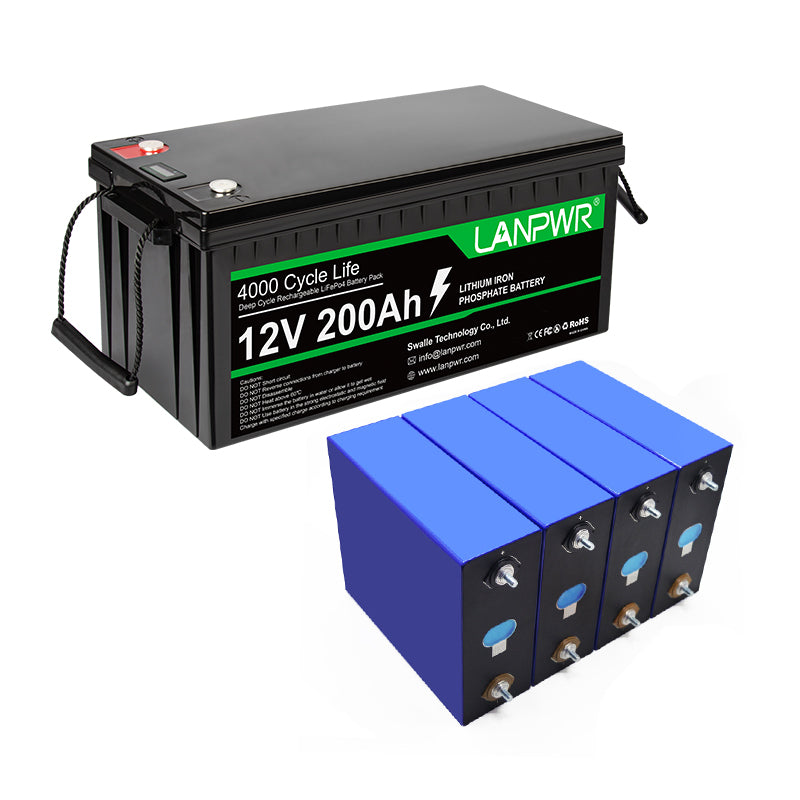Lithium Iron Phosphate (LiFePO4) batteries have become popular due to their safety, life, and performance. But the key to their performance, and longevity lies in charging them properly. How to tell if a LiFePO4 battery is fully charged is usually based on several parameters of voltage, and current signals with the help of devices like specialized charging apparatus. In this article, I will provide in-depth on how you know when your LiFePO4 battery is fully charged with easy-to-follow explanations and steps.
LiFePO4 Battery deep dive
LiFePO4 batteries, a lithium-ion battery type, feature high safety and thermal stability with long life cycle. Their cell nominal voltage is 3.2V, maximum charge voltage of 3.65 per cell worth of potential difference The applications of these batteries range from electric vehicles to solar energy systems, and portable electronics.
Charging Basics
Like deep-cycling lead-acid batteries, LiFePO4 chargers in typically two main stages:
Constant Current (CC): The charger supplies a constant current and the voltage increases progressively.
For example, in constant voltage mode (CV), the battery's final voltage equals 3.65v/cell at which point charging enters CV mode where output current tappers down until full charge is reached.
Signs that the LiFePO4 Battery is fully charged
- Voltage Monitoring
The easiest way how to find out if a LiFePO4 battery is fully charged and... it's monitoring the voltage.
LiFePO4 Full Charge Voltage: 3.65V per cell for a LiFePO4 full charge voltage.
Then either its battery pack voltage - 3.65V multiplied by the number of cells in series As an example, a 12V LiFePO4 pack (typically produced with 4 cells in series) would be charged at ~14.6v (3.65v * 4).
- Current Monitoring
Another working ploy is monitoring the charge current.
For End-of-Charge Current: During the CV stage, the current drops closer to a full charge of the battery. When the current falls below this threshold, which is set to 0.05C by default, it means the battery has been fully charged at a charge level of about 5%.
If you were to go out and buy a 100Ah battery, the end-of-charge current would be set at (5A) = 0.05 * C.
- Battery Management System (BMS)
The BMS is an essential device for any LiFePO4 battery system. It reads and controls the state of charge (SOC), voltage, current, and temperature of the battery pack.
Auto Cut-Off: A BMS can be set to cut off the charging as soon as the battery is fully charged, this again ensures safe and efficient charging.
Balancing It is also important that the specific charging of individual cells, so-called balancing, occurs regularly via BMS.
Practical Full Charge Determining Steps
Step 1: Charger Anyone can charge it with a compatible charger.
Rate this item: X Submit rating do not use a charger for LiFePO4 batteries with the wrong chemistry. The chargers were then adjusted to the correct voltage and current limits for safely charging these batteries.
Charger: Make sure that your charger can output the same voltage as is needed to charge up the battery pack.
Step 2: Measure Voltage and Current
Check the voltage and current using a multimeter or with an integrated monitoring system while charging.
Reading Voltage: Monitor voltage occasionally. The battery is nearly charged when it tops out at 3.65V per cell.
It should be like this: Charging Current, observe the current reading. It gradually decreases to almost0.05C, and the process of charging is also completed at that time.
Step 3: Use a BMS
If not already present, PEH reserves are required to add a BMS for your battery pack. The battery will be under the real-time monitoring and management of a BMS.
BMS Alerts- Keep an eye out for any alerts or notifications that the BMS may send you informing you about the completion of battery charging.
Tips for Safe Charging
- Avoid Overcharging
LiFePO4 batteries can resist overcharge, but excessive charging will still affect the cycle life of LiFePO4 batteries.
Charger Settings: Use a charger that has specified settings for LiFePO4 batteries.
BMS Care: BMS operation is okay, no overcharge
- Monitor Temperature
Overheating could harm the battery and create a safety hazard.
Room Temperature: If you charge the battery at room temperature, consciously release the heat generated during use into a well-ventilated area.
BMS with Temperature Sensors: Employ a BMS that has temperature sensors to keep an eye on and regulate the battery temperature.
- Regular Maintenance
Doing your maintenance will help to ensure the LiFePO4 battery's long life and performance.
Inspection: Check battery voltage, current, and temperature.
Clean Connections: Make sure all connections are clean (a resistor or wire that is connected to another component and corroded will create resistance) & tight in order not to have any resistance when the electricity travels through.
FAQ and Troubleshooting Guide
A: Can I Charge LiFePO4 With a Regular Lithium-Ion Charger
A: It’s not recommended.
The answer is that LiFePO4 batteries require exact voltage and current settings, which may not necessarily be something similar to other lithium-ion batteries. The use of the charger damage to overcharging
Your next question will be...If I overcharge my LiFePO4 Battery what happens?
Q: What are the risks of overcharging: It may cause overheating, shortening lifetime, and in some cases thermal runaway. Make use of the appropriate specification charger along with a BMS keeping it from being overcharged.
Q: What about balancing the cells in my LiFePO4 battery pack?
Q: Does the cell get balanced out by BMS while charging and discharging automatically? If an imbalance is detected, check and repair the BMS operation or manually balance using a compatible charger.
Enhanced Monitoring Techniques
For the technically minded, an increase in insights and control is available to those who can stretch their LiFePO4 battery management abilities with some advanced monitoring techniques.
- Coulomb Counting
It is the measurement of charge and discharge currents over time to estimate how much energy a battery has remaining -also known as state of charge (SOC). This method allows more precise SOC readings than just measuring the voltage.
Use battery monitors designed with coulomb counting for proper SOC monitoring.
- Data Logging
Data logging is the act of collecting and storing data about a battery over time. Trends can be identified, problems diagnosed, and charging behaviors optimized using this data.
Data Loggers: Deploy data loggers to record and analyze battery parameters continuously.
Summary
Charging a LiFePO4 battery to its full state means monitoring voltage, and current and even using protection devices like BMS. By following the instructions and suggestions laid out in this article, you can safely and efficiently charge your LiFePO4 batteries to optimize their performance... Whether you are utilizing these batteries for solar energy storage, electric automotive purposes, or moveable electronics understanding the charging course may also help enhance lifespan. Chargers Charging the battery properly not only prolongs its life but also provides high safety and reliability in all kinds of applications.














Leave a comment
This site is protected by hCaptcha and the hCaptcha Privacy Policy and Terms of Service apply.